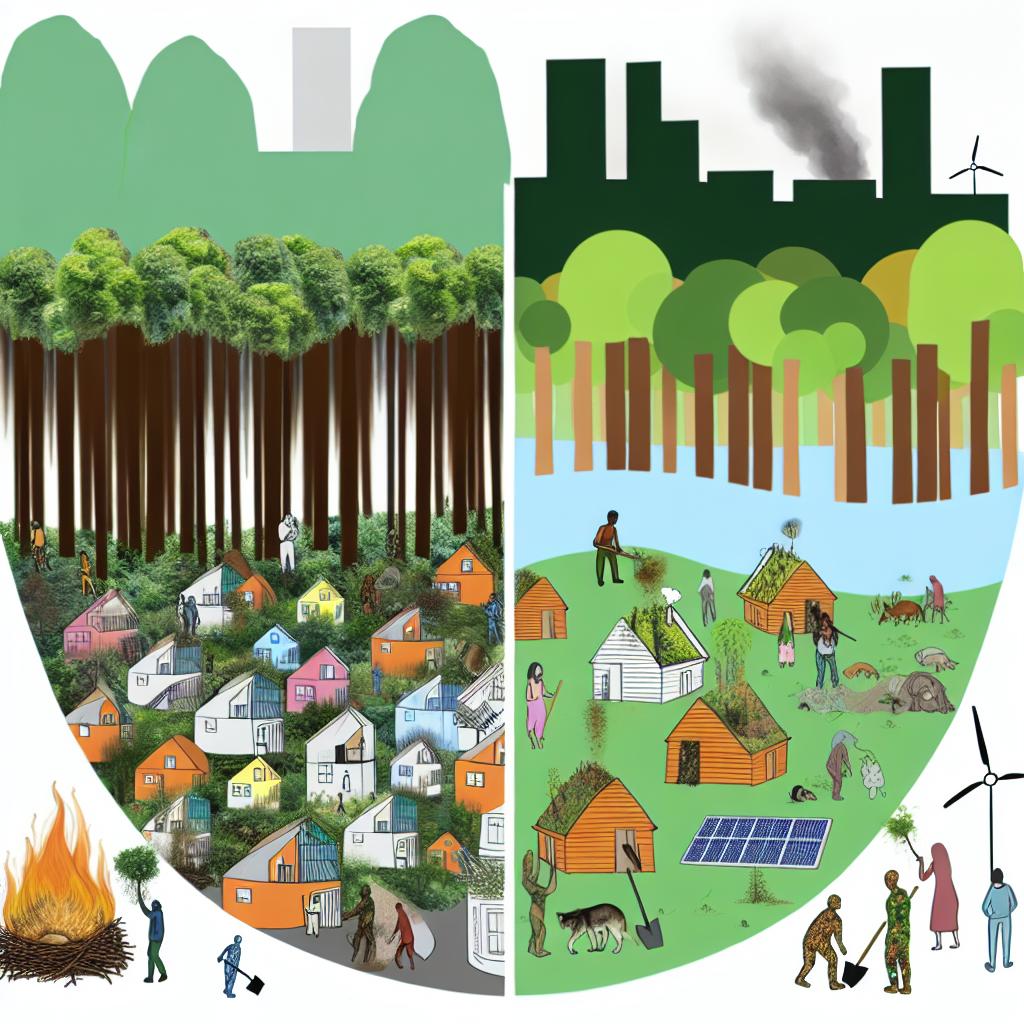
The Ethics of Rewildering: Balancing Nature and Human Needs
The Ethics of Rewildering: Balancing Nature and Human Needs
Rewildering is an increasingly popular conservation strategy aimed at restoring ecosystems to their natural, uncultivated states. While its benefits to the environment are widely recognized, it also brings to the forefront questions about ethical balance between ecological restoration and human needs and rights. As we venture deeper into the practice of rewildering, it is vital to navigate these ethical complexities carefully to arrive at solutions that are both environmentally and socially responsible.
Understanding Rewildering
The core of rewildering lies in its ambition to bring back biodiversity and revive ecosystems by letting nature follow its own course. Frequently, this involves the reintroduction of native species that have been lost over time and the removal of invasive species that disrupt ecosystem harmony. Human interventions such as farming and logging may also be restricted in specified areas to reduce human impact and allow for natural regeneration.
Advocates of rewildering stress its potential role in combating climate change and its capacity to preserve biodiversity. By functioning as carbon sinks, healthy, biodiverse ecosystems can play a pivotal role in absorbing carbon dioxide from the atmosphere. Moreover, restored ecosystems offer a variety of ecosystem services such as pollination, water purification, and flood control, all of which are essential for sustaining life on Earth.
Ethical Considerations
Impact on Local Communities
One significant ethical concern in rewildering is the potential displacement of people living in or near areas earmarked for ecological restoration. Oftentimes, these areas are inhabited by indigenous and rural communities whose cultural and economic livelihoods depend significantly on the land. This raises a critical ethical question: how can rewildering initiatives be carried out without infringing on the rights and needs of these communities?
To address this concern, inclusive decision-making processes are indispensable. It is crucial to engage with local communities right from the initial planning stages to identify shared goals and objectives. Community involvement ensures that rewildering projects are not only ethical in practice but also more effective and sustainable in the long run. Increased engagement leads to a sense of shared ownership and responsibility, which is likely to contribute positively to the overall success of the conservation efforts.
For additional information on the importance of inclusivity in conservation projects, further resources can be explored at Conservation International.
Balancing Human Needs with Biodiversity Goals
Another pressing ethical issue lies in balancing human development with environmental restoration. Rewildering, while beneficial to biodiversity, can also impact the availability of land for agriculture, urban development, and other human-centric activities essential for societal development.
Policymakers have the challenging task of weighing these diverse interests and establishing strategies that do not undercut human needs in their quest to achieve biodiversity objectives. Strategies such as sustainable agriculture and innovative urban planning can be instrumental in harmonizing human activities with ecosystem restoration goals. By adopting these approaches, it is possible to cater to societal growth needs without diminishing the ecological benefits that rewildering provides.
Benefits of Ethical Rewildering
Ethically implemented rewildering projects offer myriad benefits that extend well beyond the immediate natural surroundings. Properly restored ecosystems are significantly more resilient to natural disasters, thereby offering better protection for human settlements nearby. Improved air and water quality, along with increased carbon sequestration, are additional benefits derived from flourishing ecosystems.
Rewildering also opens doors to eco-tourism and educational opportunities, both of which can be economically rewarding for local communities. Nature-based tourism not only generates income but also educates participants about the importance of biodiversity conservation, thereby fostering a culture of environmental stewardship.
Conclusion
In summary, rewildering is a promising step toward conserving our planet’s biodiversity, yet it is essential that ethical concerns are sufficiently addressed to ensure that the rewards of these conservation efforts are shared equitably. By prioritizing inclusive practices and maintaining a delicate balance between ecological goals and human needs, we can progress toward a more sustainable and equitable future.
For more discussions on this crucial topic, The International Union for Conservation of Nature provides a comprehensive collection of information on ethics in conservation and practical recommendations for ecological restoration.
The path to effective rewildering involves delicate negotiation and collaboration. By engaging with diverse stakeholders, including governmental agencies, conservationists, local communities, and private entities, it becomes possible to craft innovative solutions that fulfill multiple objectives. As more regions worldwide contemplate rewildering, ongoing research and shared knowledge will serve as pivotal forces, guiding us toward more ethical and impactful conservation outcomes.